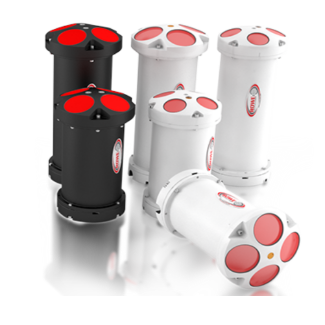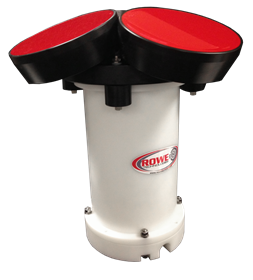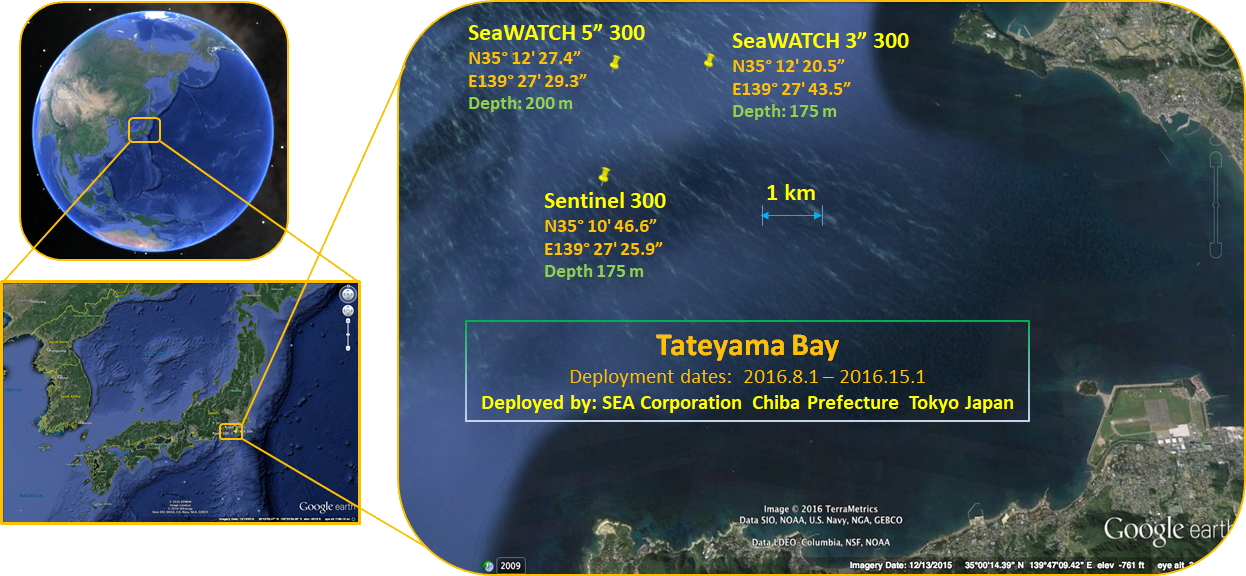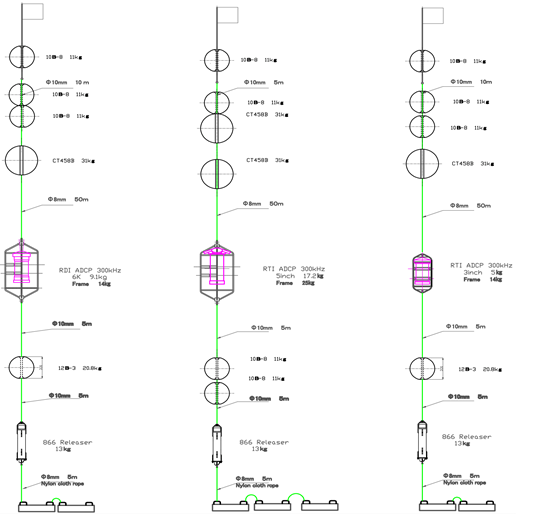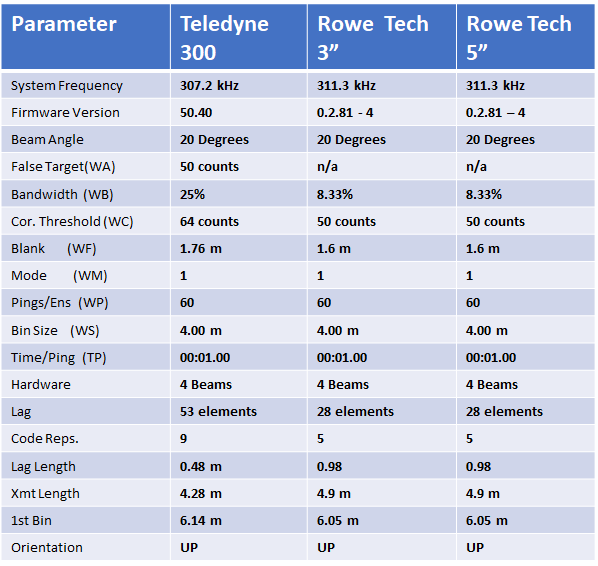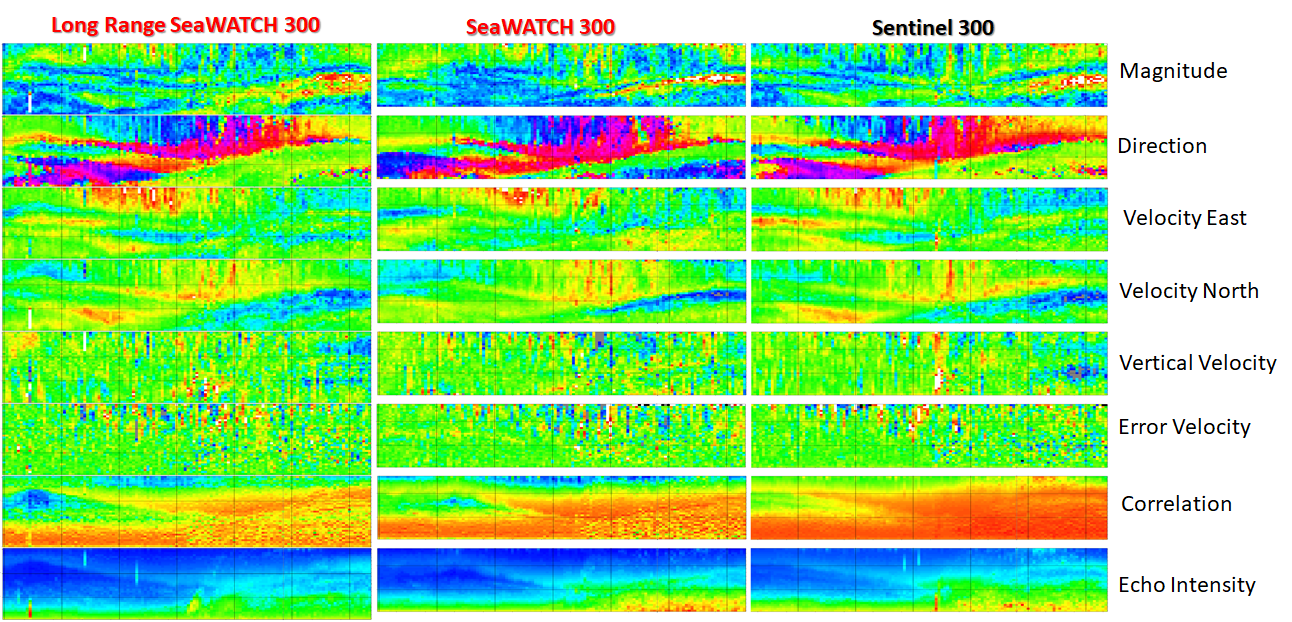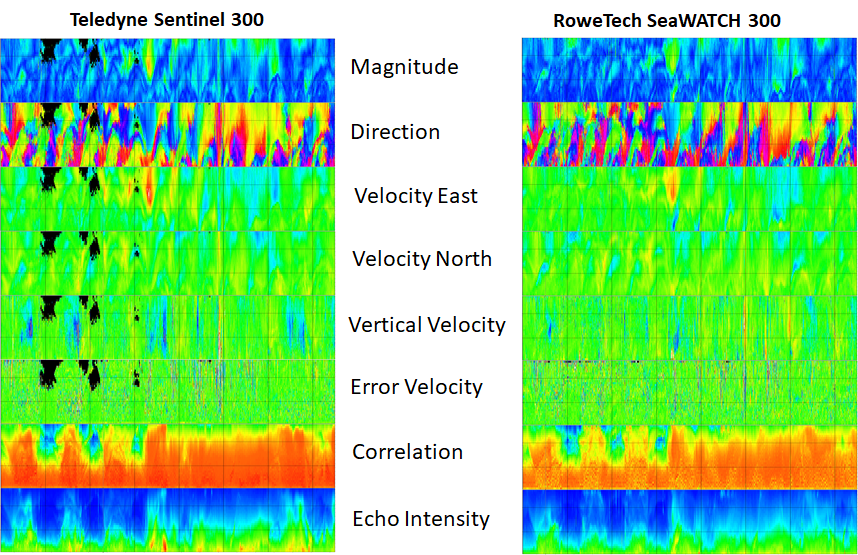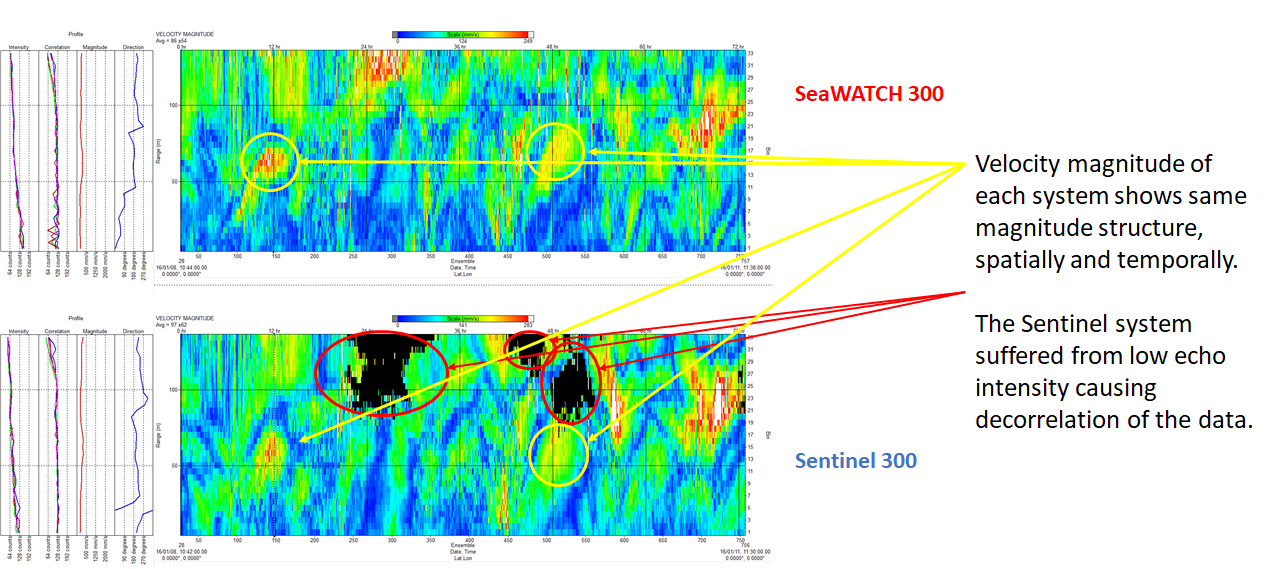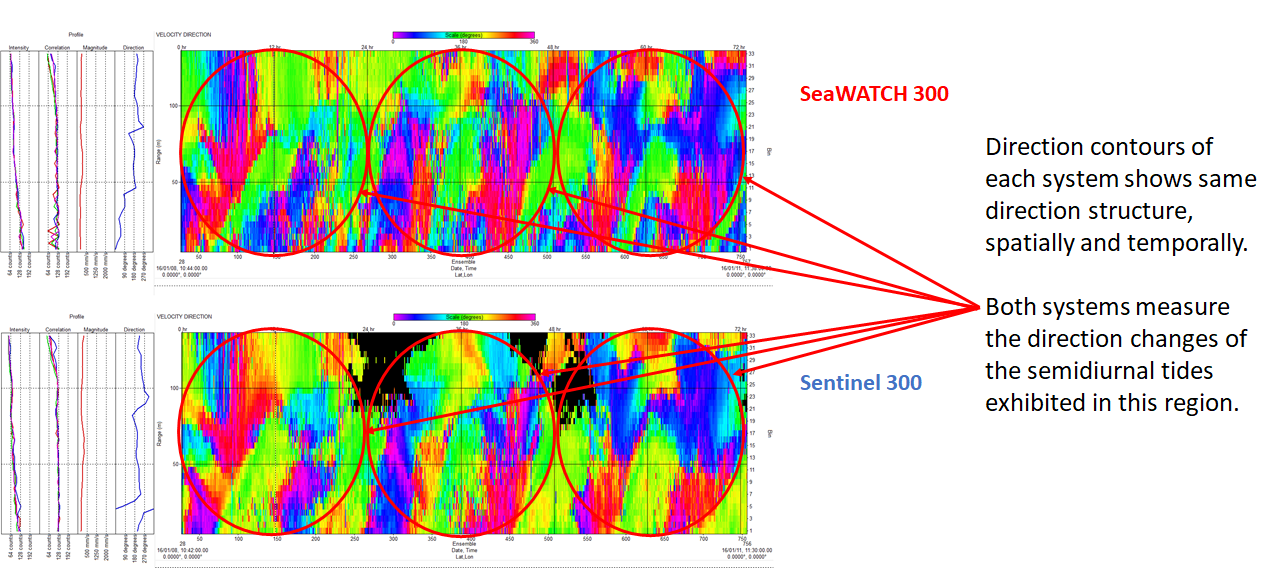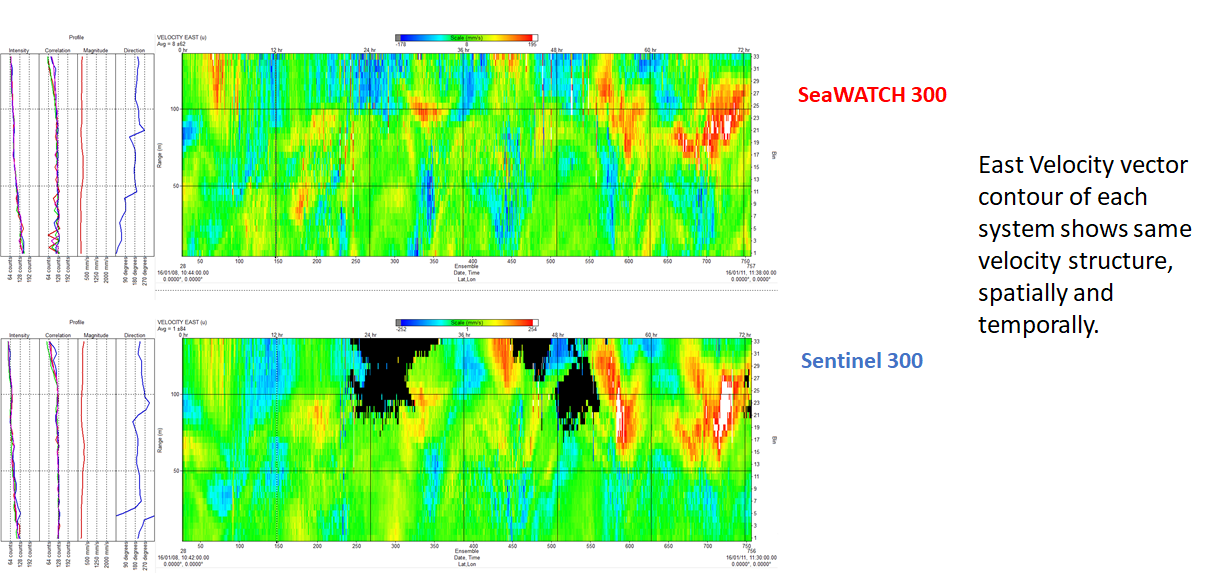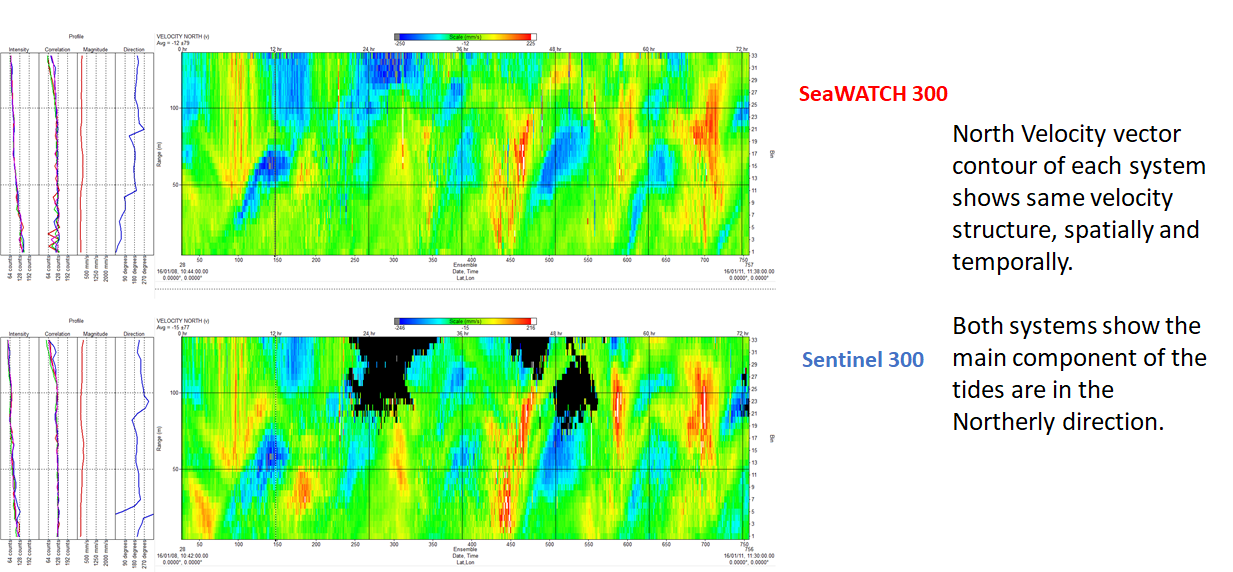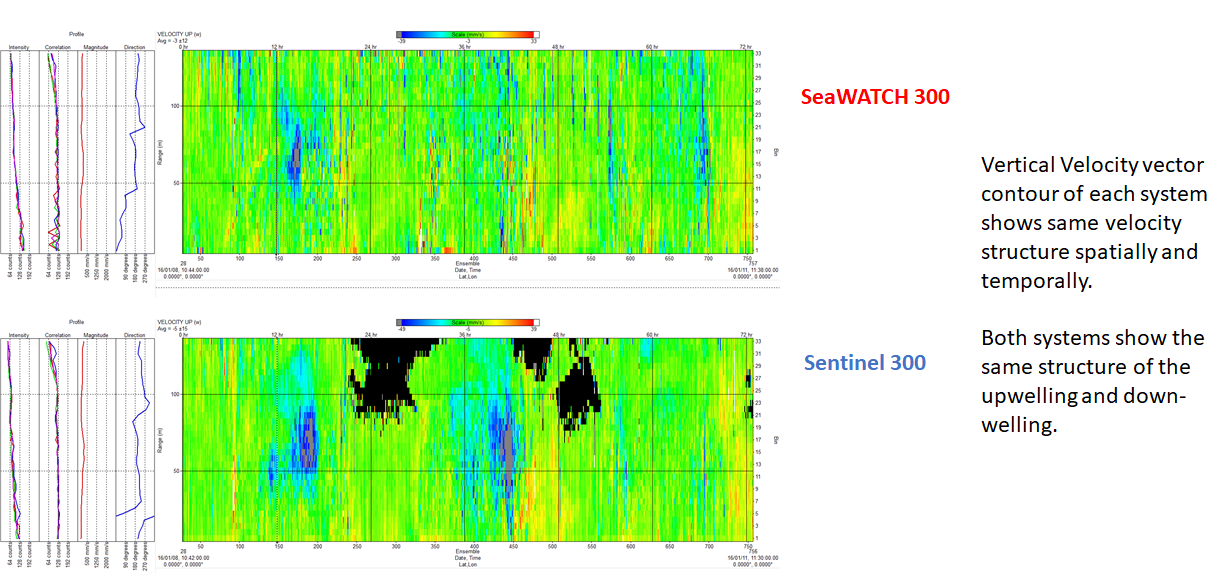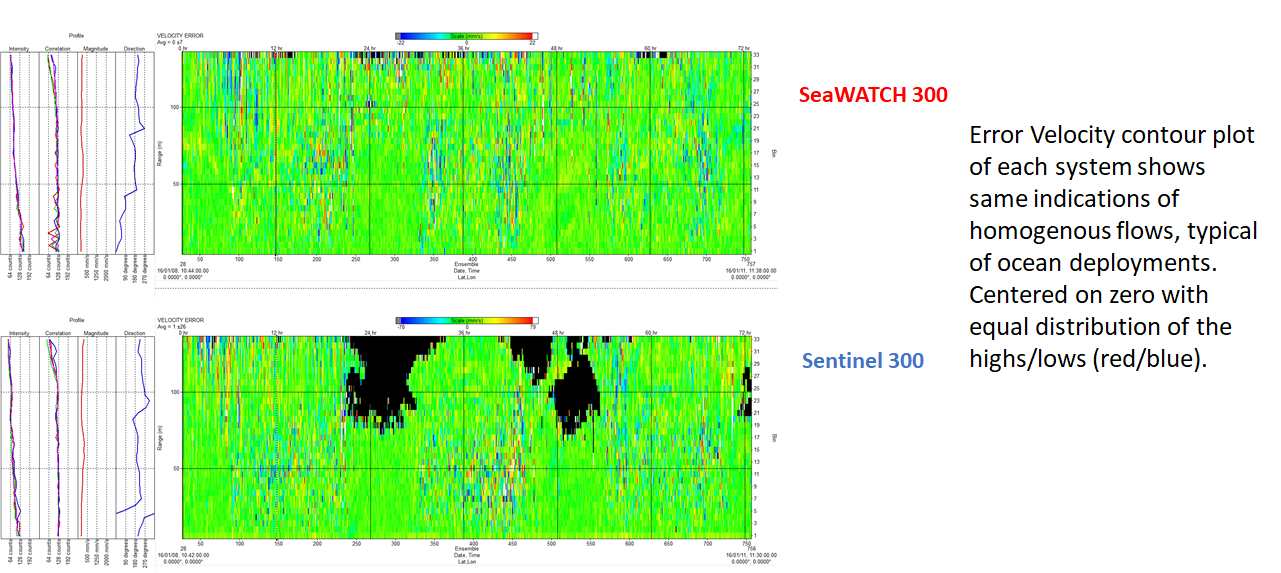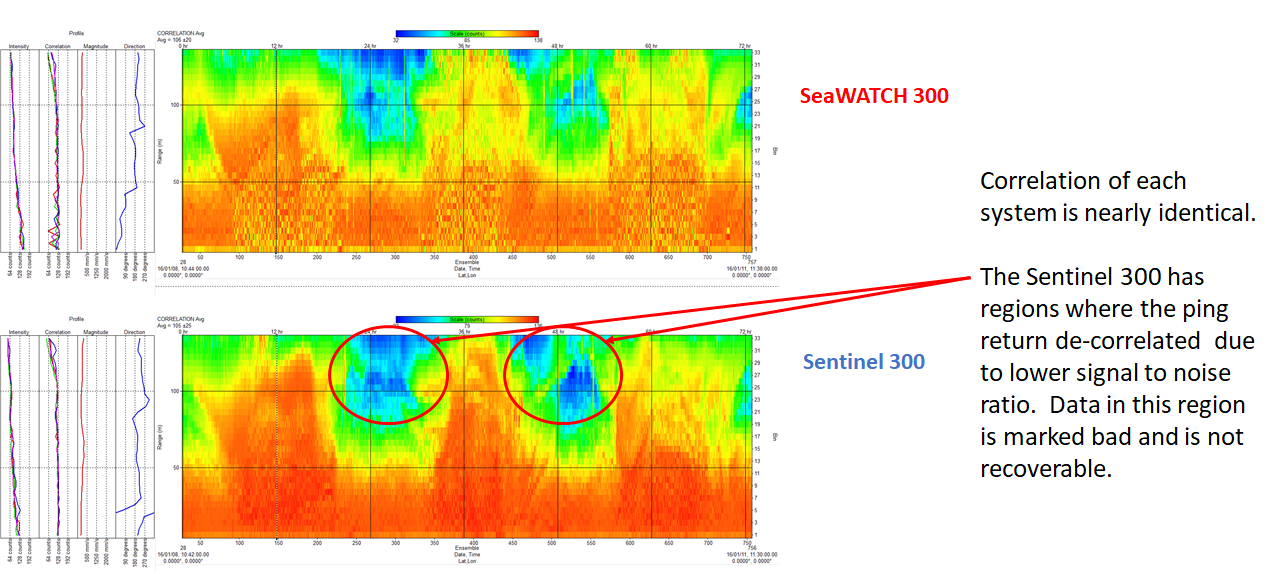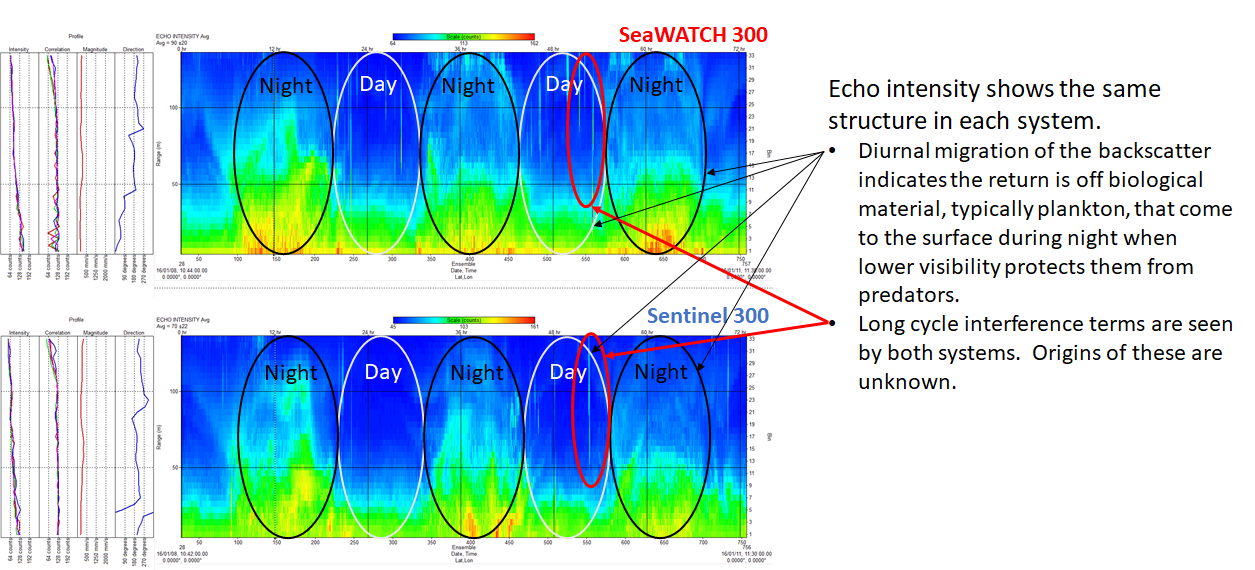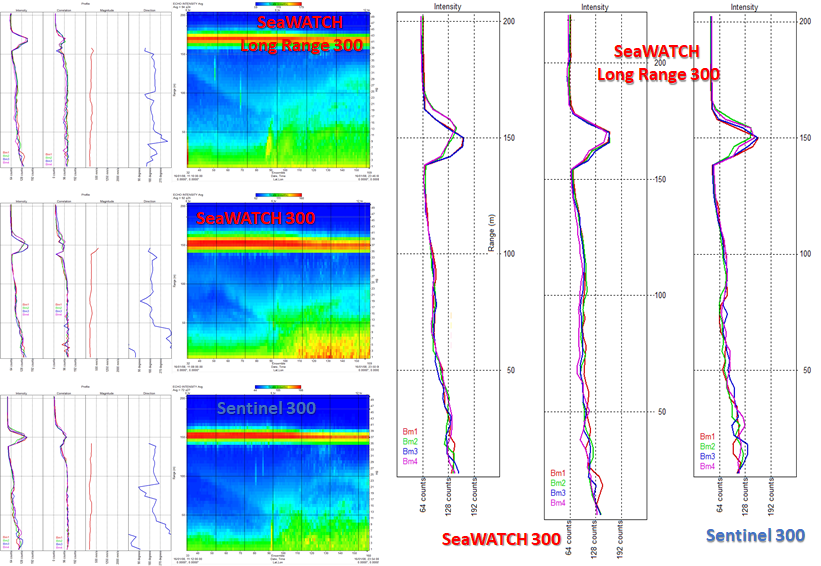October 31, 2018
This is a deep water comparsion between a Teledyne RD Instruments Workhose Sentinel 300khz ADCP and a Rowe Technologies Inc. SeaWATCH 300kHz ADCP. All are equipped with 4 beams. This comparision uses two version of the SeaWATCH 300kHz: the standard 3in and the Long Range 5.25in ADCP. This will also demonstrate increased range of Rowe Technologies Inc. long range 300 kHz SeaWATCH compared to standard SeaWATCH 300 kHz ADCP’s in deep water.
Sentinel vs SeaWATCH Results
The data analysis shows that the RoweTech SeaWATCH 300 and the Teledyne Sentinel 300 both make the same measurement under identical conditions in deep and shallow water. The RoweTech system shows an overall higher signal to noise return than the Sentinel. This contributes to increased range in normal conditions, or better sensitivity in regions or times when there is less backscatter.



